
Robohub.org
Firing up The Machine
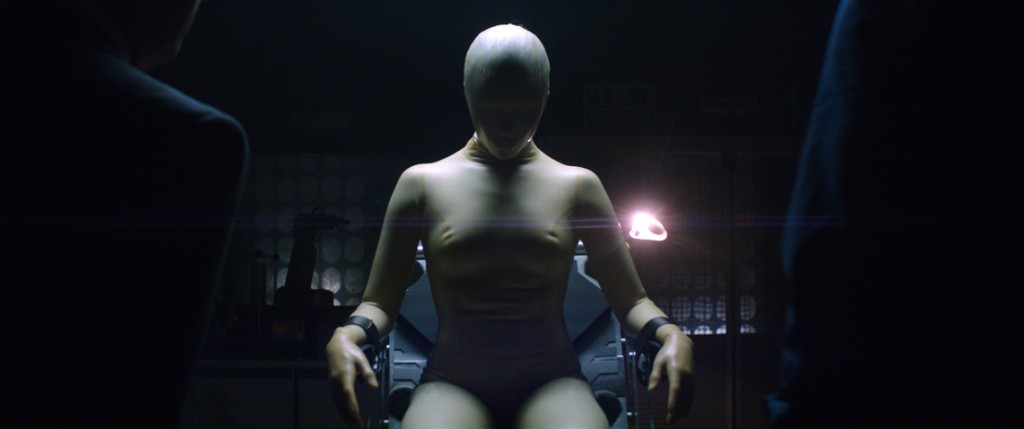
Pick a robot from the movies. Go on, I know you have a favourite. There are plenty to choose from, so I’ll give you a moment …
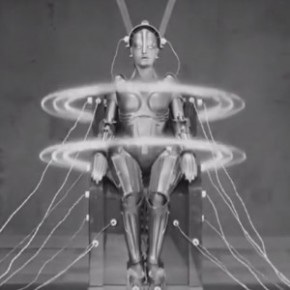
Which did you choose? Was it the Maschinenmensch – the mechanical doppelganger of Maria, as seen in Fritz Lang’s seminal Metropolis? Or did you opt for Arnold Schwarzenegger as the relentless cyborg assassin from The Terminator? Or how about Robbie, that benevolent Ariel-analogue from Forbidden Planet?
Perhaps you picked one of the replicants from Blade Runner, arguing that, for a filmmaker, a genetically-engineered organism serves the same narrative function as most fictional robots – namely to hold up a mirror to our own humanity. Bishop from Aliens would probably agree with your thesis – after all, he does prefer the term “artificial person”.
As an alternative to all these classic movie icons, I’m inviting you to consider Ava, android star of British indie film The Machine, released this week in the US on DVD/Blu-Ray. Like many of her illustrious android predecessors, Ava is a physical marvel. Intellectually and emotionally she’s no slouch either; indeed, she may very well possess world’s first self-aware artificial intelligence. Make no mistake – Ava is a robot to be reckoned with.
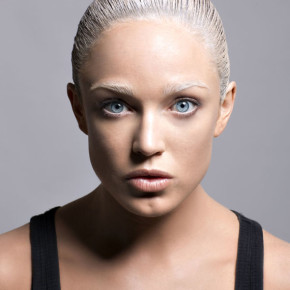
Caity Lotz as Ava in “The Machine”
The Machine begins with computer scientist Vincent McCarthy (Toby Stephens) trying to create a true thinking machine. When a military agenda adds robot weaponisation into the mix, the result is Ava – an acrobatic, intelligent robot with plenty going on beneath her artificial skin.
Development of The Machine’s visual effects began early on, during the production of a three-minute proof-of-concept film by producer/director team John Giwa-Amu and Caradog James of Red and Black Films. Bait Studio created the promo’s VFX, in particular developing a look for the robot’s glowing skin. Once finance was secured, they worked alongside Minimo VFX and Tim Smit to deliver the visual effects for the feature.
“Pulling together such a talented team of VFX guys across Bait (Wales), Minimo (Barcelona) and Tim Smit (Holland) was a key factor in the film’s success,” said Giwa-Amu. “We knew that The Machine might live or die on the quality of the VFX and our three lead providers allowed us to compete with some of the best films on release.”
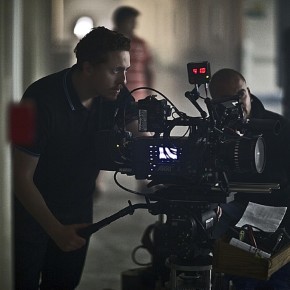
Christian Lett and Llyr Williams, Visual Effects Supervisors at Bait Studio, described the scope of their work on the film:
“We designed, animated and composited the computer user interface graphics, CG prosthetic enhancements, set extensions and matte paintings, gore and gunfire, skin glows, and all the eye glows. We worked very closely with the director, helping to shape the look he wanted, developing approaches that matched his vision, and giving us a real insight into how our work fitted into the narrative, as well as the look of the movie.”
As well as contributing to the near-future ambience, the film’s many and varied computer displays also communicate key story points.
“Caradog wanted the computer UI to look cool, but functional – and not too slick,” said Lett and Williams. “In particular, he told us not to get UI envy from films like Avengers Assemble or Minority Report. He wanted the system to look like it might have cost a lot of money to develop back in the day, but had since been hacked by many MOD engineers to make it do what they wanted. We researched some real-world military UI design – along with designs from other films and TV shows – to help us find the right balance for The Machine. Bait Studio has an award-winning motion graphics team alongside our VFX artists, so these shots in particular played to many of our strengths.”
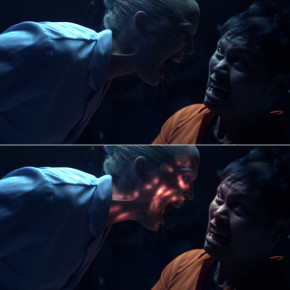
Ava glowing skin effect – before and after digital enhancement
The Machine features an array of robot tech, from prosthetic limbs and brain implants to the star of the show, Ava, played by Caity Lotz. All the tech – Ava included – looks human on the outside, but its fleshy exterior conceals a powerful metal chassis that, under certain circumstances, emits light.
“We worked a lot with Nuke on the skin glows,” said Lett and Williams, “using projection mapping techniques to track the movement of the actor’s skin. This meant we could quickly achieve and fine-tune the subsurface ‘metal under skin’ look that Caradog was looking for. The compositing department had the most heavy lifting to do because of the volume of shots. Most of the work was 2D, with small amounts of CG being brought into Nuke’s 3D environment, rather than relying solely on render passes out of Maya.”
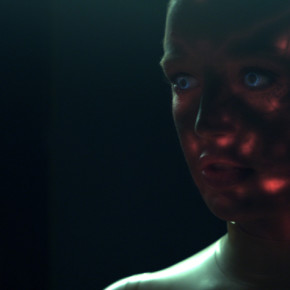
Stage photography of Cathy Lotz: Digital skin and eye glow.
In one memorable sequence, created by Minimo VFX, Ava explores her physicality by dancing through a huge underground chamber. Shot in near darkness, the lyrical scene makes striking use of the robot’s glowing substructure. Minimo VFX Directors and Co-Founders Felix Balbas and Maurizio Giglioli explained their approach:
“Minimo VFX worked extensively with the director on the design of the glowing inner skeleton, in order to create not merely a believable effect, but something with a dreamy-evanescent feeling. Our design had to reflect the very intimate journey taken by the character in the sequence. The footage was already very elegant, so it was a matter of preserving it, adding a touch of “magic”. Because it was shot in darkness and silhouette, the dance sequence was a very difficult body-tracking challenge, for which Minimo turned to Peanut VFX for support.
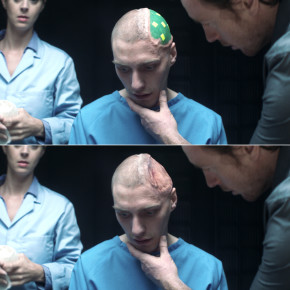
Digital skin and eye glows
“We went through several iterations of shading and comping tests, trying to successfully incorporate all the ingredients: internal layers of self-shading, sub-surface scattering and normal ambient effect – all quite challenging for objects that are inside a body, and almost completely in silhouette. After many tests, we realised that the sharper the contrast was, the better it worked. This way we maintained the original feeling of the photography, and kept the layers as subtle as possible.”
In the film’s dramatic opening sequence, McCarthy interviews a wounded soldier, Paul Dawson (John Paul MacLeod), whose catastrophic injury has cratered a large section of his head. The soldier’s startling appearance was the result of Bait Studio’s digital work, combined with prosthetics by Paul Hyett.
“The actor wore prosthetic make-up for the edges of the wound, with a green section that was removed and replaced with a CG prosthetic,” said Lett and Williams. “We used Autodesk 123D Catch to create the CG wound from the silicone prosthetic, then cleaned it up and rendered it in Maya. The actor’s head was tracked using SynthEyes, and the final composite was done using Nuke. The most challenging part of this shot was rebuilding Toby Stephens’s hair as it passed in front of the yellow tracking markers.
“The opening sequence has 55 VFX shots, ranging from glowing eyes, tabletop computers (later covered in blood) and gore to robotic tentacles lifting a girl into the air. We were really pleased and proud to have our biggest sequence at the very start of the film, and the feedback has been overwhelmingly positive. This scene establishes the film visually as a cut above most low budget science fiction films, and helps sell the world that you’re in. Being able to help with both these things was very rewarding.”
Watch the video for breakdowns of Bait’s visual effects from The Machine:
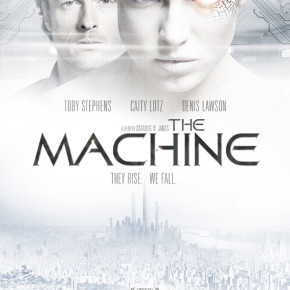
In all, Bait Studio delivered 250 shots for The Machine over a period of about four months from concept to delivery. Reflecting on the company’s first feature experience, Lett and Williams concluded:
“We’re constantly learning on projects and applying that knowledge to the next, so we can streamline our workflow and develop as a studio. It also showed us how beneficial it is to have a design capability within the studio, so we can offer creative as well as technical solutions to filmmakers. The Machine was a great opportunity to showcase our work and also to show that we have the resources and talent here in Wales to tackle this type of project.”
Images copyright © 2014 Red and Black Films & Bait Studio.
tags: c-Arts-Entertainment, sci-fi, The Machine






